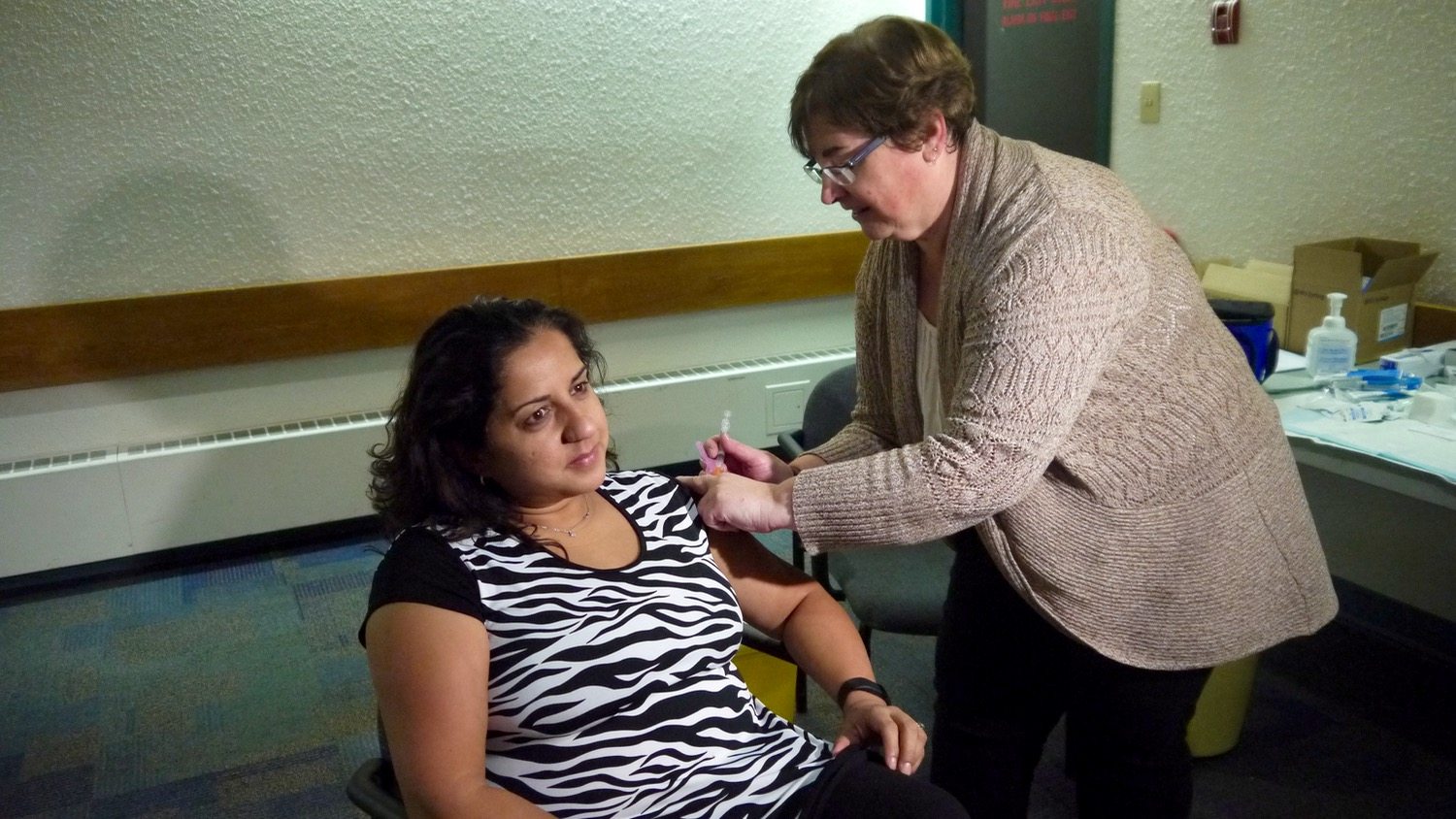This year’s flu vaccine is now available in Yellowknife – with a top territorial official one of the first in line.
Dr Kami Kandola, the NWT’s deputy chief public health officer, turned up to get her shot yesterday. Naturally, Moose FM thrust a microphone into proceedings as the needle plunged.
Her main message: this year’s vaccine is better than before, and now’s the time to get it.
“What’s really exciting this year is we’re offering protection against four strains of influenza – two influenza A strains and two influenza B strains,” said Kandola.
“In the past, we’d offered only protection against three – two flu A and one flu B.”
More information: 2015 walk-in flu clinic details
During the last flu season, 21 percent of Northwest Territories residents got their flu shot – 9,235 individuals. More than half of seniors received the vaccine, but only 15 percent of those aged 10 to 19 turned up.
Immunization rates in Yellowknife were among the lowest in the territory. Around 18 percent of Yellowknife and Dettah residents got their vaccine, compared to other examples such as 54 percent in Deline, 31 percent in Fort Resolution, 28 percent in Fort Smith and 24 percent in Hay River.
In Fort Liard, just three percent of residents received a flu vaccine according to Department of Health figures.
“Right now, flu season hasn’t hit. Typically, it hits from late November up to April or even May,” said Kandola, who claims to have had her shot each year since 1989.
“In the NWT we have no circulating flu activity, so the best time to get the vaccine is now, before the flu hits the NWT. Don’t wait for the flu to appear before you decide to get the vaccine. By then, it may be too late. Now is the time.”
In the last flu season – from November 2014 to August 2015 – there were 149 cases of flu or flu-like viruses in the territory. Cases peaked in February and March.





